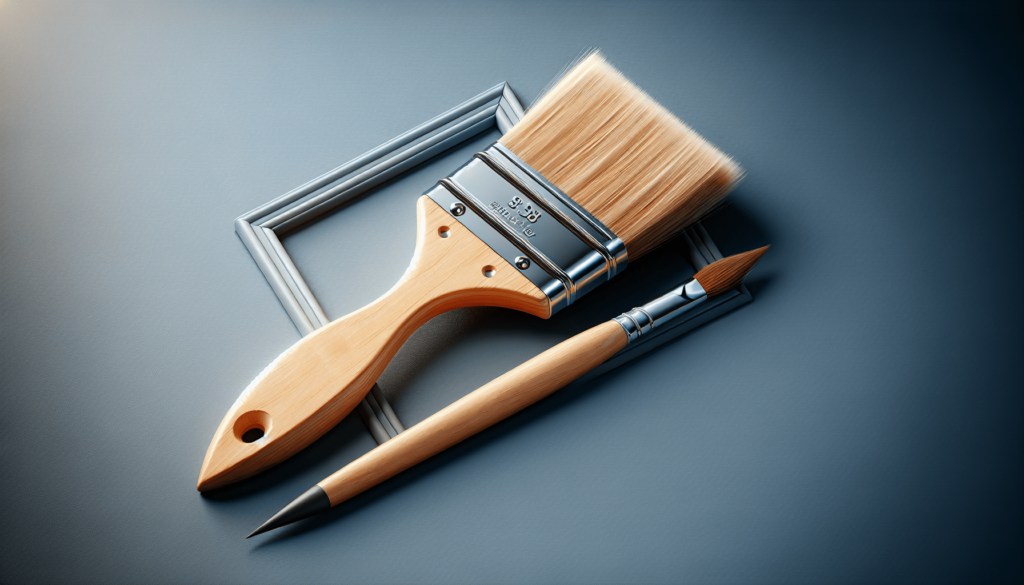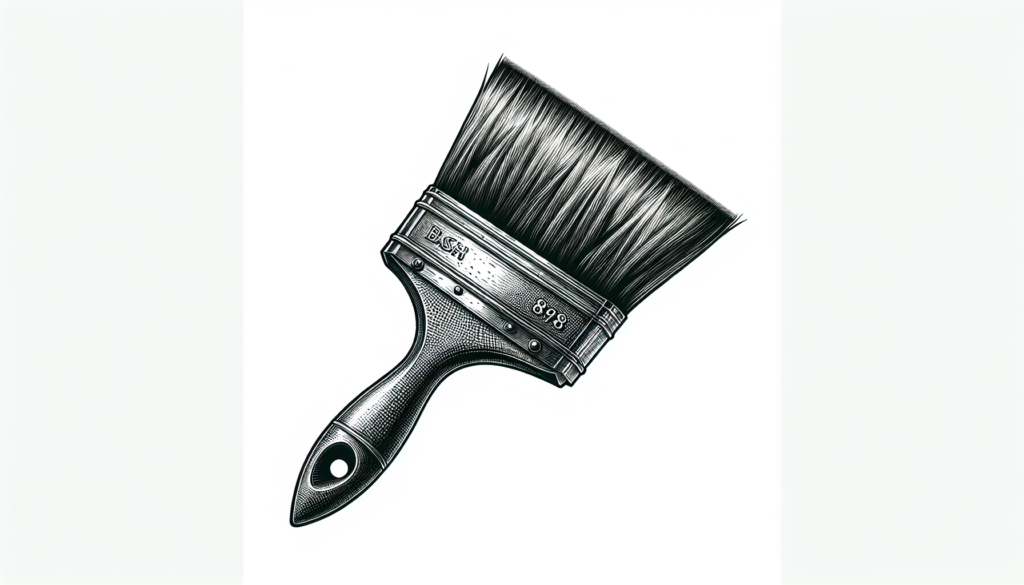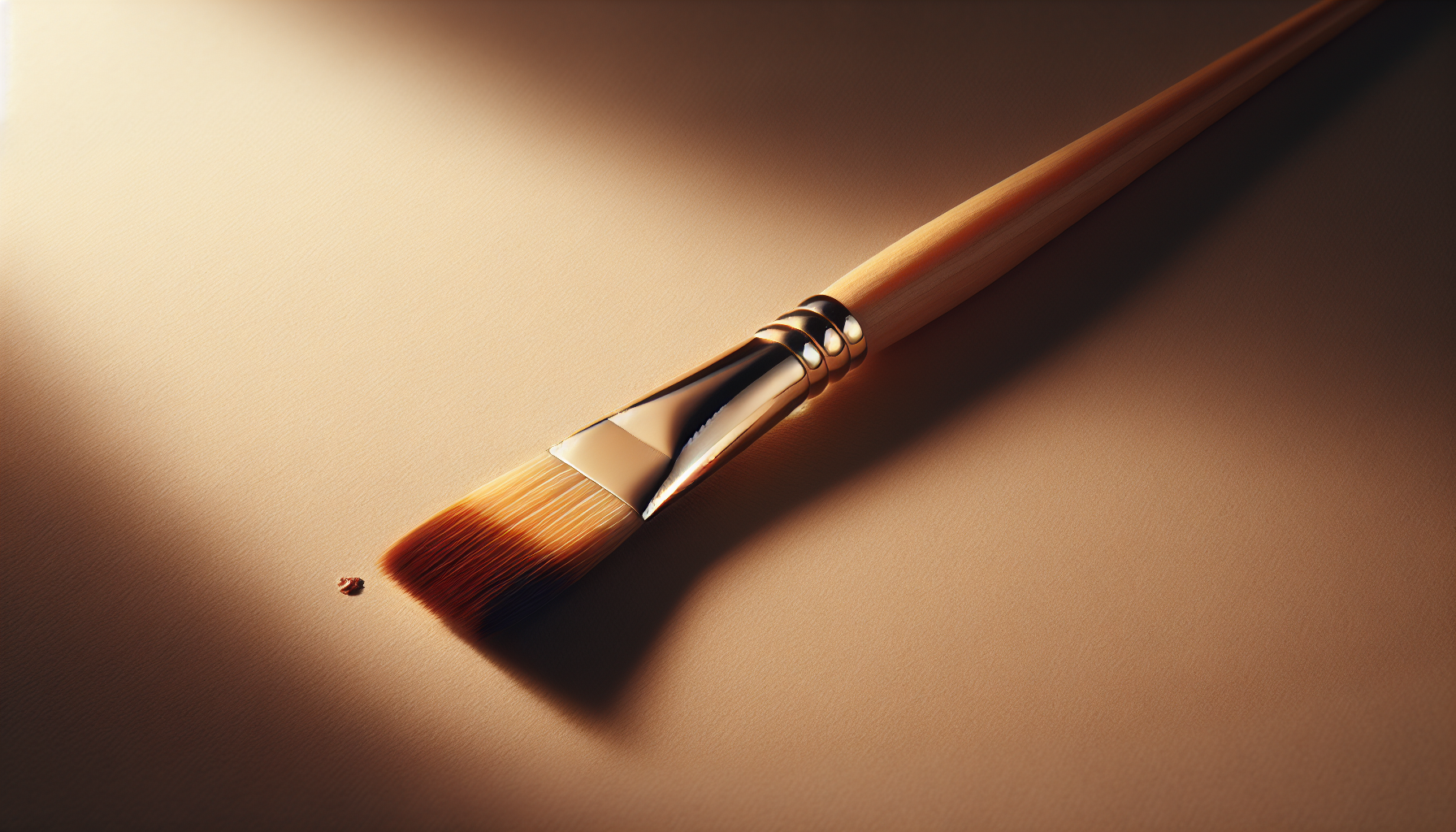In the sphere of painting tools, the subtle distinctions between different types can often seem overwhelming. One such tool that stands out is the sash paint brush. This article will elucidate clearly what exactly a sash paint brush is, exploring its unique features, uses, and how it compares to other brushes in the field. Get ready to expound your painting knowledge and add a new tool to your skillset.
Overview
Definition of a Sash Paint Brush
A sash paint brush, common in both professional and hobbyist painting kits, is a special type of pictorial brush known for its characteristic angled tip. Unlike typical flat or straight-edged brushes, the angled tip of a sash brush enables a more precise and controlled painting experience, especially when working on window sashes or cutting in around intricate objects.
Uses of a Sash Paint Brush
Sash paint brushes offer a range of uses beyond the eponymous application on window sashes. Their design facilitates accuracy during cutting in, a technique where fresh paint is applied close to trim, window panes, or other hard-to-reach or sensitive areas without leaving unsightly brush marks. The sash brush’s distinct attributes make it a versatile tool in all manner of painting tasks including detailed artwork, furniture restoration, and delicate trim work.
Characteristics of a Sash Paint Brush
Bristles
The bristles of a typical sash paint brush are tapered towards the end, forming a precise angled tip. They may be made of natural materials like hog or badger hair, or synthetic fibers like nylon or polyester. The quality, density, and flexibility of the bristles significantly influence the brush’s performance and lifespan.
Handle
Handles of sash paint brushes tend to be comfortable and ergonomic, designed to diminish hand strain during prolonged use. They may be short for detailed work or longer for reach. The material of the handle can range from wooden to plastic, affecting the weight and balance of the brush.
Size and Shape
Sash brushes come in various sizes and shapes to cater to different painting tasks. The size refers to the width of the brush head, which can range from narrow for detail work to wider for painting larger areas. The shape is generally angled, allowing for precise application even in corners and edges.

Types of Sash Paint Brushes
Natural Bristle Sash Paint Brushes
Natural bristle sash paint brushes carry bristles made from animal hair. They are renowned for their ability to hold a large amount of paint thereby applying layers with a smooth and luxurious finish. However, they are best suited for oil-based paints as water-based paints can cause the natural fibers to swell and lose shape.
Synthetic Bristle Sash Paint Brushes
Synthetic bristle sash paint brushes offer a durable and cost-effective alternative to natural bristle brushes. They perform exceptionally well with water-based paints, without the risk of swelling or losing their shape over time.
Angled Sash Paint Brushes
Angled sash paint brushes are characterized by their slanted bristles, which provide increased precision and control. The angled tip makes these brushes especially useful for cutting-in tasks and painting in tight corners.
Benefits of Using a Sash Paint Brush
Precise Cutting-in
The angled tip of a sash paint brush is specifically designed for precise cutting-in. It allows painters to create crisp, straight lines around trim and other architectural details.
Smooth and Even Paint Application
The design and quality of sash paint brushes contribute to a smooth and even paint application. The brush can hold a generous amount of paint and distribute it evenly, providing a uniform look to the painted surface.
Control and Maneuverability
Sash paint brushes offer exceptional control and maneuverability, which is efficient in achieving a professional finish. Their design improves painters’ control over the brush strokes, even in intricate or hard-to-reach areas.
Long-lasting Durability
Sash paint brushes are renowned for their durable construction. Whether it’s a natural or synthetic bristle brush, with proper care, these brushes can offer long-lasting performance.
Easy to Clean and Maintain
Even with regular use, sash paint brushes are comparatively easy to clean and maintain. With proper cleaning techniques and storage, the lifespan of these brushes can be significantly extended.

Choosing the Right Sash Paint Brush
Consider the Project
It’s crucial to consider the project first when selecting a sash paint brush. For example, a larger brush might be suitable for painting a door, but for delicate trim work, a smaller, more precise brush would be ideal.
Material of Bristles
The material of the bristles should be selected according to the type of paint to be used. As mentioned, natural bristles excel with oil-based paints, while synthetic bristles are well-suited for water-based paints.
Handle Comfort
Comfort is an important factor, especially for long painting sessions. Test the brush in your hand before purchasing and look for a handle that feels comfortable and balanced.
Size Selection
In line with considering the project, the brush size should also be considered. Keep in mind that larger brushes may speed up the painting process for big surfaces, but smaller brushes provide the precision required for detailed work.
Caring for a Sash Paint Brush
Cleaning after Use
To maintain a sash paint brush’s performance, it should be cleaned immediately after use. Depending on the paint type, suitable cleaning solutions can be chosen, ranging from warm soapy water to specialized cleaning agents.
Proper Storage
After cleaning, brushes should be stored properly to maintain their shape. It’s best to hang them upside down, allowing the excess water to drain off and air to circulate around the bristles.

Common Mistakes to Avoid when Using a Sash Paint Brush
Overloading with Paint
Avoid overloading the brush with paint as it can create drips and globs that impair the overall finish. It’s better to dip the brush halfway into the paint and tap off the excess.
Using the Wrong Brush for the Task
Each painting task may require a different brush type for optimal results. Thus, it’s crucial to choose the right brush according to the specific task at hand, considering factors like surface, paint type, and level of detail.
Poor Brush Care
Not caring for brushes properly can hamper their performance and shorten their lifespan. Regular cleaning and proper storage are key to maintaining a sash paint brush.
Comparing Sash Paint Brushes with other Paint Applicators
Sash Paint Brush vs. Roller
While rollers can cover a vast area quickly, they fall short when it comes to precision. Sash paint brushes excel in detail work due to their angled bristles and offer a higher degree of control than rollers.
Sash Paint Brush vs. Foam Brush
Foam brushes can leave a smooth finish but are not designed for longevity. They are often viewed as disposable. On the other hand, sash paint brushes, with appropriate care, can last for years serving their purposes well.
Sash Paint Brush vs. Paint Sprayer
Paint sprayers are efficient for large, unobstructed surfaces but lack the control necessary for detail work. Sash paint brushes offer the precision that sprayers lack and are thus more suitable for detailed or intricate painting tasks.

Expert Tips for Using a Sash Paint Brush
Holding the Brush Correctly
Hold the sash paint brush like a pencil for better control. Place your thumb and forefinger on the metal band (ferrule), and rest the handle against your palm for stability.
Maintaining a Consistent Pressure
Maintaining consistent pressure is essential. Too much pressure can bend the bristles and lead to uneven paint application, while too little pressure might not distribute the paint sufficiently.
Using Long, Smooth Strokes
It’s recommended to use long, smooth strokes when painting to prevent uneven paint distribution and visible brush marks. The length of the stroke often depends on the size of the brush and the nature of the work.
Conclusion
To sum up, a sash paint brush, with its distinct angled tip, offers a unique set of benefits over other paint applicators, standing as a go-to tool for precision painting tasks. When carefully selected and properly maintained, a sash brush can be a long-lasting and valuable addition to one’s painting tool kit. Understanding its properties and how to maximize its advantages can greatly enhance painting outcomes, whether for a DIY enthusiast or a professional painter.




